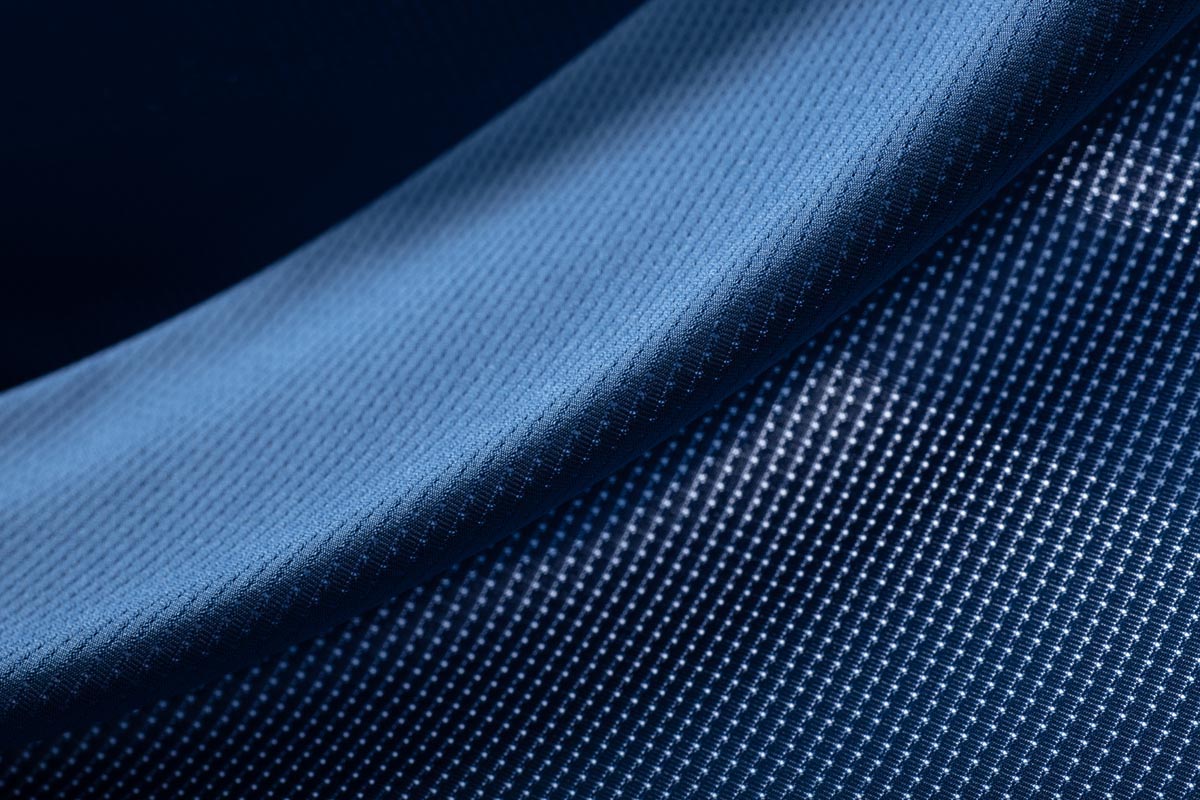THE FABRIC OF PERFORMANCE: EXPLORING THE DIFFERENCES IN RUNNING MATERIALS

When it comes to running apparel, the fabric you choose can make a significant difference in comfort, performance, and overall running experience. From moisture-wicking synthetics to natural fibers, each material has its unique properties, advantages, and drawbacks. Below we explore the most common fabrics used in running gear.
Polyester.
Polyester is one of the most popular materials used in running apparel, thanks to its moisture-wicking properties. It effectively draws sweat away from your skin, helping to keep you dry during intense workouts. Additionally, polyester is lightweight, durable, and resistant to shrinking and stretching, making it a reliable choice for both short and long runs. However, polyester is a synthetic fabric derived from oil which is why many companies are turning to recycled polyester to reduce the demand for further oil consumption.
Nylon.
Nylon is another synthetic fabric commonly found in running apparel. Known for its excellent durability and resistance to abrasion, nylon is ideal for high-intensity workouts and rough conditions. It also has good moisture-wicking abilities and dries quickly, which helps to maintain comfort during extended runs. One downside of nylon is that it can be less breathable compared to other fabrics, potentially leading to overheating during particularly hot or humid runs. Additionally, nylon can be prone to pilling over time, which may affect the fabric's appearance and feel.
Spandex (Lycra/Elastane).
Spandex, often known by its brand names Lycra or Elastane, is renowned for its exceptional elasticity. This fabric is typically blended with other materials to provide stretch and flexibility, ensuring a snug fit that moves with your body. This makes it ideal for compression gear, which can enhance circulation and reduce muscle fatigue. Despite its benefits, spandex can be sensitive to high heat and may degrade over time with repeated exposure to heat from washing and drying. It’s also not as effective at moisture-wicking on its own, which is why it’s usually combined with other fabrics like polyester or nylon.
Merino Wool.
Merino wool is a natural fiber prized for its excellent thermal regulation and moisture-wicking capabilities. Unlike traditional wool, Merino wool is soft, non-itchy, and highly breathable, making it suitable for both warm and cold weather running. It also has natural antimicrobial properties, which help reduce odor buildup. The main drawback of Merino wool is its higher cost compared to synthetic fabrics. Additionally, while it is durable, it may not withstand the same level of wear and tear as synthetic materials, requiring more delicate care when washing and drying.
Cotton.
Cotton is a natural fiber that is often avoided in performance running apparel due to its tendency to absorb and retain moisture. This can lead to heavy, wet clothing that can cause chafing and discomfort during long runs. However, cotton is breathable and soft, making it comfortable for casual wear or low-intensity activities. The primary advantage of cotton is its affordability and comfort for everyday use. However, for serious running endeavors, it’s generally recommended to opt for more performance-oriented fabrics that offer better moisture management and durability.
Blended Fabrics.
Blended fabrics combine the best properties of multiple materials to create versatile and high-performance running apparel. Common blends include polyester and spandex, which offer a balance of moisture-wicking, durability, and stretch. These blends can enhance comfort and performance by addressing the limitations of individual fabrics. The pros and cons of blended fabrics depend on the specific combination used. Generally, they aim to maximize the benefits while minimizing the drawbacks, making them a popular choice among runners who seek balanced performance features.
Conclusion.
Choosing the right fabric for your running apparel is crucial for optimizing your comfort and performance. Ultimately, the best fabric for your running gear depends on your personal preferences, running conditions, and specific needs. Understanding the properties of each material will help you make informed choices that enhance your running experience.
See you out there,
Luke
- Tags: Technical Fabrics
0 comments



